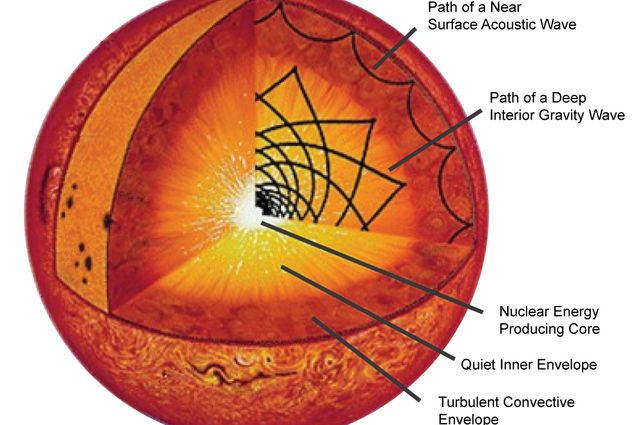We all learn new things every, single day. The same goes in the world of physics and astronomy. Often what we thought we knew turns out to be wrong and instead we learn some very surprising facts. That’s what’s just happened with astronomers observing the sun. They’ve only now discovered after all these years that the sun’s core rotates four times faster than its surface. Previously, they had assumed that it traveled about the same speed as the surface.
This new insight could give experts just what they need to better understand what the sun was like when it first formed all those years ago. The findings were discovered by a team of international astronomers. Roger Ulrich is a UCLA professor emeritus of astronomy and co-author of the study. He said, “The most likely explanation is that this core rotation is left over from the period when the sun formed, some 4.6 billion years ago. It’s a surprise, and exciting to think we might have uncovered a relic of what the sun was like when it first formed.”

The rotation of the outer part of the sun was most likely slowed due to the solar wind about after the sun formed, according to Ulrich. It may also have impacted enormous sunspots, which also rotate. As part of the study, researchers looked into the surface acoustic waves that are found in the sun’s atmosphere. Some of these waves penetrate into the sun’s core where they interact with gravity waves. The researchers then measured the acoustic waves to determine the time it takes it to travel from the surface to the sun’s center and back again.
Ulrich advised that travel time is influenced slightly by the sloshing of the gravity waves. So, after taking the sloshing into consideration, the researchers made the calculation using 16 years worth of observations they took from GOLF (Global Oscillations at Low Frequency) on a spacecraft called SoHo (the Solar and Heliospheric Observatory). For more than 20 years the idea the solar core was spinning more rapidly than the surface had been considered but never measured until now.
More News to Read
- Scientists Use New Model to Better Predict Brown Dwarf Weather Forecasts
- Researchers Discover Neurons are Much More Flexible Than We Thought
- Tedious Film Editing Could Soon Become a Thing of the Past
- Breakthrough in Gene Editing Comes as Scientists Correct Disease-Causing Mutation in Human Embryo
- Science Behind Recalling Past Memories, How We Recall?











